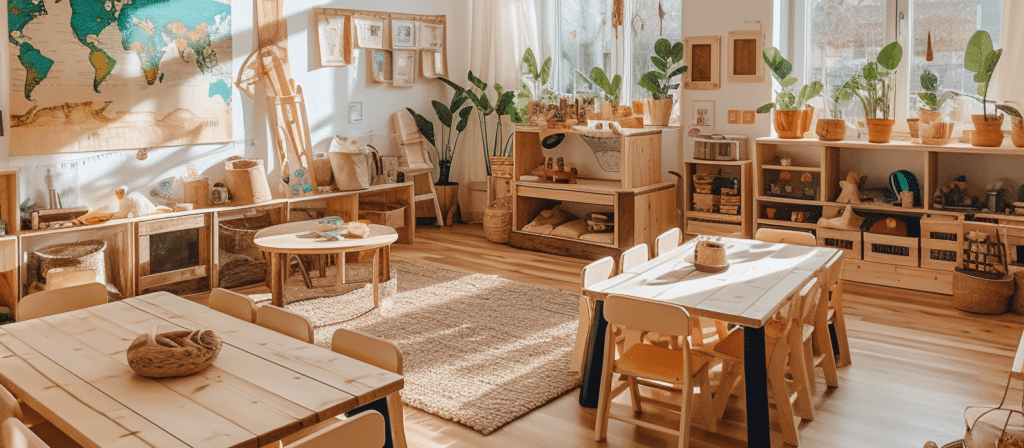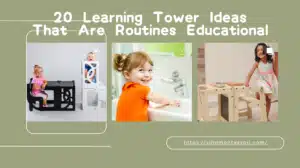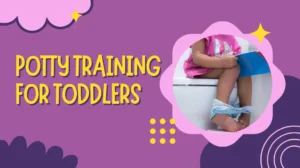Are you committed to providing a safe and nurturing Montessori environment for children? Ensuring the safety of Montessori furniture is paramount to creating an ideal learning space. In this guide, we’ll explore Montessori furniture safety, offering comprehensive guidelines and best practices to protect and empower young learners.
Montessori Furniture Safety: Guidelines and Best Practices delves into the critical aspects of ensuring the safety of the furniture in Montessori settings. By adhering to these guidelines and implementing best practices, you can safeguard children in their educational journey.
What are Montessori Furniture Safety Guidelines?
Montessori education is based on the belief that children learn best in an environment that allows for freedom of movement and independence. Montessori furniture plays a crucial role in creating such an environment, but it is essential to follow certain safety guidelines to prevent accidents and injuries.
One of the key principles of Montessori furniture safety is the use of child-sized furniture. It is important to ensure that chairs, tables, and shelves are proportionate to the size and capabilities of the children using them. This allows for easy access and promotes independence.
Another important aspect is the use of materials that are safe and non-toxic. Children often explore their environment by touching and even mouthing objects. Therefore, it is crucial to choose furniture made from natural, non-toxic materials, such as solid wood or BPA-free plastic.
Additionally, Montessori furniture should be sturdy and stable to prevent tipping or collapse. This is especially important for shelves and bookcases that children may climb or pull on. Securely anchoring furniture to the wall can provide additional stability and prevent accidents.
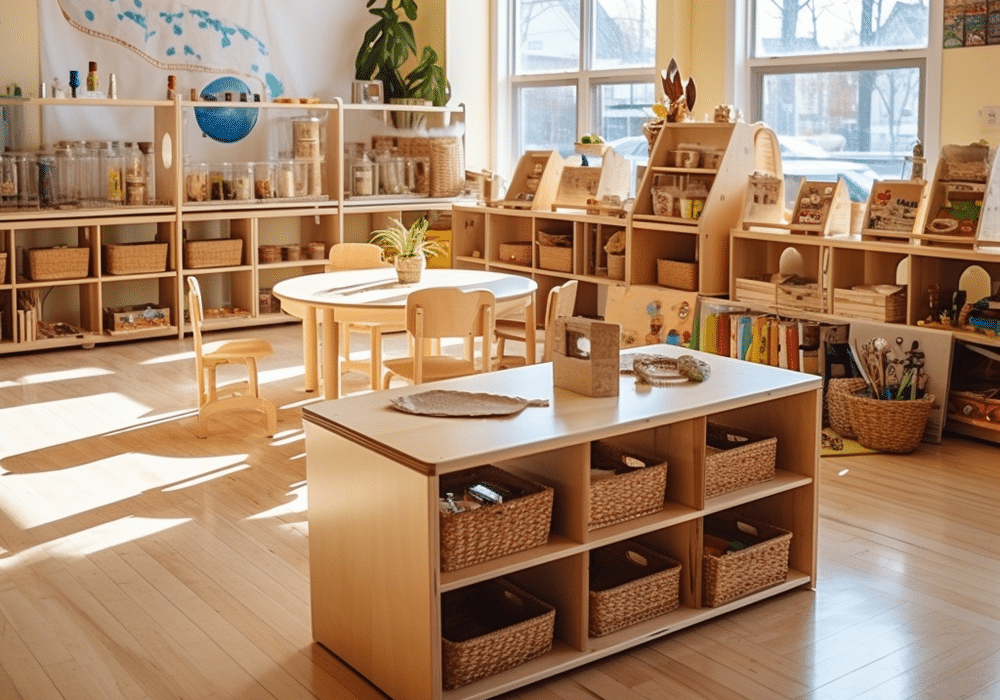
Best Practices for Montessori Furniture Safety
In addition to following the guidelines mentioned above, here are some best practices to ensure Montessori furniture safety:
- Rounded Edges: Choose furniture with rounded edges to minimize the risk of injuries from sharp corners. Avoid furniture with protruding or sharp edges that can cause cuts or bruises.
- Non-Slip Surfaces: Ensure that furniture, especially chairs and tables, have non-slip surfaces to prevent accidents caused by sliding or tipping. Rubber or silicone feet can provide stability and reduce the risk of falls.
- Proper Storage: Teach children how to use and return materials to their designated places. Proper storage reduces the risk of tripping over objects or having heavy items fall on children.
- Regular Inspection: Regularly inspect Montessori furniture for any signs of wear and tear or damage. Repair or replace any broken or damaged furniture immediately to prevent accidents.
- Age-Appropriate Design: Consider the age and developmental stage of the children using the furniture. Montessori furniture should be designed to accommodate the specific needs and abilities of different age groups.
What are the key safety guidelines for Montessori furniture?
When it comes to Montessori furniture, safety should always be a top priority. Here are some key guidelines to keep in mind:
- Sturdy Construction: Montessori furniture should be made from high-quality materials that can withstand the wear and tear of daily use. It is essential to choose furniture that is sturdy and stable, ensuring the safety of children while they work and play.
- Non-Toxic Materials: Children have a tendency to explore their environment through touch and taste. Therefore, it is crucial to select furniture made from non-toxic materials, such as natural wood or eco-friendly paints, to avoid any potential health hazards.
- Rounded Edges: Sharp edges can pose a significant risk of injury to children. Montessori furniture should have rounded edges and smooth surfaces to minimize the chance of accidents.
- Proper Height: Montessori furniture is designed to be child-sized, allowing children to independently access and use the materials. It is important to ensure that the height of the furniture is appropriate for the age group using it, preventing strain or accidents.
- Secure Fastenings: Whether it’s chairs, tables, or shelves, all Montessori furniture should have secure fastenings to prevent any accidental collapses or tip-overs. Regular inspections should be conducted to ensure that all fastenings are in good working condition.
- Fire Safety Measures: In any learning environment, fire safety is of utmost importance. Montessori classrooms should have fire extinguishers easily accessible and be equipped with fire-retardant materials to minimize the risk of fire hazards.
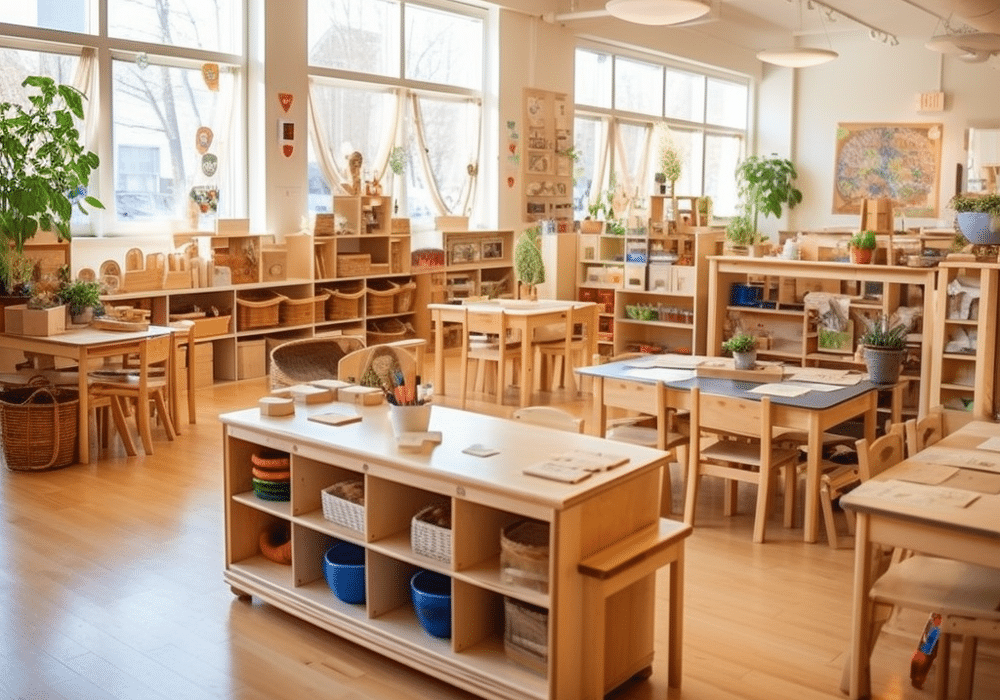
How can we ensure Montessori furniture safety?
To ensure the safety of Montessori furniture, it is essential to follow these best practices:
- Regular Inspections: Regularly inspect all Montessori furniture for any signs of wear and tear, loose fittings, or damage. Address any issues promptly to prevent accidents.
- Proper Maintenance: Maintain the furniture by cleaning it regularly and following the manufacturer’s recommended care instructions. This will help prolong the lifespan of the furniture and keep it in good working condition.
- Proper Arrangement: Arrange the furniture in a way that allows for easy movement and accessibility. Ensure that there is enough space between furniture pieces to avoid overcrowding, which can lead to accidents.
- Supervision: While Montessori furniture promotes independence, it is still important to provide adequate supervision to ensure the safety of children. Teachers and caregivers should always be present and actively observe children while they engage with the furniture.
- Safety Education: Teach children about the proper and safe use of Montessori furniture. Encourage them to handle the furniture with care, use it for its intended purpose, and respect the personal space of others.
How can Montessori furniture contribute to a safe learning environment?
Montessori furniture plays a significant role in creating a safe and conducive learning environment for children. Here are some ways in which it contributes to their safety:
- Promotes Independence: Montessori furniture, designed to be child-sized, allows children to independently choose and use materials. This freedom helps develop their motor skills and fosters a sense of responsibility, reducing their reliance on adult assistance and minimizing the risk of accidents.
- Encourages Focus and Concentration: The design and layout of Montessori furniture encourage children to work in a focused and concentrated manner. With easy access to materials and a comfortable working space, children are less likely to become distracted and more likely to engage in safe and purposeful activities.
- Enhances Organization Skills: Montessori furniture, such as shelves and cubbies, provides designated spaces for materials and belongings. This promotes organization skills and teaches children to clean up after themselves, reducing the risk of tripping hazards and fostering a sense of orderliness.
- Supports Physical Development: Montessori furniture, including tables and chairs, is designed ergonomically to support proper posture and physical development. This helps prevent musculoskeletal issues and discomfort, ensuring the physical well-being of children.
- Encourages Collaboration: Montessori furniture is often arranged to facilitate collaboration and social interaction among children. By working together, children learn to communicate, share, and respect each other’s personal space, creating a safe and inclusive learning environment.
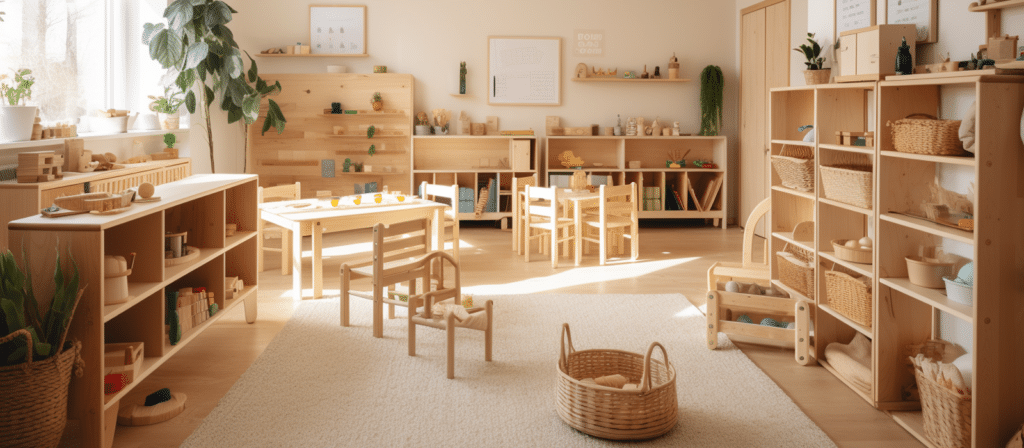
How Does Montessori Furniture Enhance Learning?
Montessori furniture is specifically designed to support the principles of Montessori education and enhance children’s learning experience. The child-sized furniture allows children to independently choose and use materials without relying on adult assistance. This promotes a sense of autonomy and self-confidence.
The open shelves and accessible storage spaces of Montessori furniture encourage children to take responsibility for their environment and develop organizational skills. By having easy access to materials, children can freely explore and engage in activities that interest them, fostering a love for learning.
Moreover, the natural and aesthetically pleasing design of Montessori furniture creates a calm and inviting atmosphere. This environment promotes concentration and focus, allowing children to fully engage in their activities and develop important cognitive and social skills.
Are Montessori Furniture Safety Guidelines Universal?
While Montessori furniture safety guidelines are essential for creating a safe learning environment, it is important to note that each setting may have specific requirements and regulations. It is crucial to comply with local safety standards and regulations when selecting or designing Montessori furniture.
Additionally, the guidelines may vary depending on the age group and developmental stage of the children. It is important to consider the specific needs and abilities of the children in your care when implementing Montessori furniture safety guidelines.
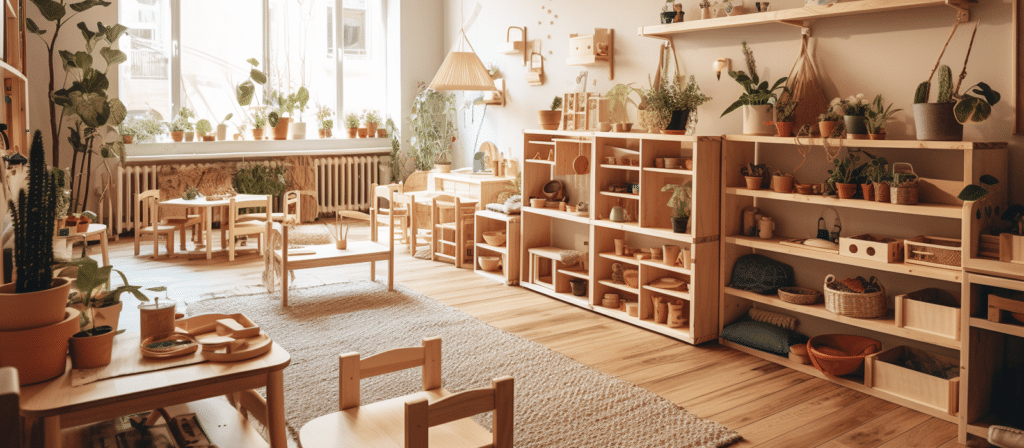
Conclusion
Montessori furniture safety guidelines and best practices are crucial for creating a safe and supportive learning environment for children. By following these guidelines and incorporating best practices, we can ensure that Montessori furniture not only enhances learning but also prioritizes the safety and well-being of children.

